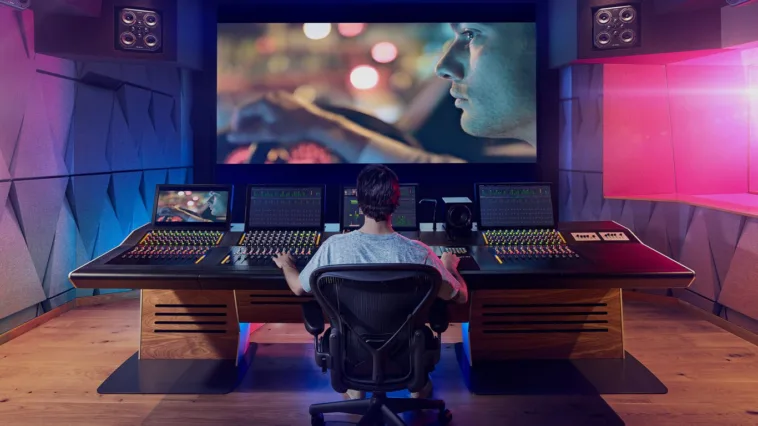The wedding is always an auspicious event that looks aesthetic, elegant, and colorful, filled with happy and sad emotions. It is a heavy task to capture all these elements and moments through videography. The raw footage misses the essence of the real eye view in the video, and to achieve that same elegance, color, and joy, Wedding Videography Editing plays an essential role with all the technical knowledge and experience in the field. They enhance every emotion with their technical editing style, and we will focus on that aspect of editing to create an engaging and attractive wedding video in post-production.
Process Of Wedding Video Editor After Receiving the Raw Footage
The wedding film editor takes over after the event has been recorded. Hours of uncut video from various cameras and devices may be included in the raw files. It is the editor’s responsibility to make this a smooth, emotionally compelling movie.
Here’s where technical wedding video editing begins:
1. Multi-Cam Syncing
The majority of weddings requires wide-angle, close-up, drone, and handheld cameras to have multiple perspectives. The first technical step is multi-camera syncing, aligning all these angles perfectly.
Wedding video editors use programs like Adobe Premiere Pro or Final Cut Pro to sync audio with multiple videos. Expert editors focus on creqating smooth edit with no awkward pauses or jumps in the audio of the speeches, vows, or ceremony.
The Final Output:
This editing style provides smooth syncing and an immersive experience during the ceremony and speeches, when vows are being exchanged or heartfelt toasts are delivered.
2. Audio Enhancement and Sound Design
A wedding video editor removes background noise, such as wind, chatter, and hum to improve audio quality in the video. Software like Adobe Audition or iZotope RX are used for this purpose. They design the sound effects using background noise, music, and words spoken by the characters to enhance the video quality. Plus, they add subtle sound effects, like church bells, birds chirping, or other surrounding to add a layer of realism.
The Final Output:
It is used during emotional moments, like the first look or bride and groom or they are walking down the aisle. Having clean, and well-balanced sound emotionally attracts the viewers towards the scene.
3. Color Correction and Cinematic Grading
Due to shifting indoor and outdoor conditions, raw wedding footage may have variations in exposure, color temperature, and lighting.
Our Wedding Film Editor does color correction in selected footage to fix brightness, contrast, and white balance inconsistencies. Color grading is one of the essential techniques in editing to produce aesthetic, golden, romantic warmth or clean, elegant, cool tones in the film.
The Final Output:
It is required in the entire wedding film, from bridal prep to the final dance. The consistent and stylized coloring enhances the cinematic feel.
4. Seamless Cuts and Story Structuring
To have perfect wedding videography editing, the editor must follow the narrative flow. That is why editors carefully curate the emotional highs and soft transitions between events in the video.
To increase its impact, they combine speech and music with images using L-cuts, J-cuts, jump cuts, and slow-motion inserts. In order to match the background track’s beat, they use rhythm-driven editing.
The Final Output:
In full-length edits, teaser videos, and highlight reels, the editing style decides whether the video is engaging or dragging too much. It is important to have a trimmed and on-point video while covering all the essential moments.
5. Visual Effects, Graphics, and Titles
Professional wedding video editing services may include, in addition to cuts and transitions:
Motion graphics is used for name titles, dates, or animated chapter transitions. Speed ramping is used to highlight significant events, such as the bouquet toss or first kiss. The specialist uses stabilization to smooth out handheld or shaky footage.
The Final Output:
In montages and Instagram-friendly clips, where polish and shareability count.
6. Outsourced Wedding Video Editing for Fast, Scalable Production
For consistency and scalability, a lot of independent videographers and busy studios use outsourced wedding video editing.
The Outsourced Video editor handles everything from editing, syncing, grading, to delivery. We understand the client’s preferences, LUTs (Look-Up Tables), and style to create the wedding video. This enables videographers to concentrate on shooting while professionals take care of post-production.
The Benefit:
Wedding companies can manage multiple projects each month by outsourcing, which speeds up the production of high-quality edits without causing burnout.
Enjoy Every Bit Of Your Wedding Video
Your wedding film is a carefully crafted narrative created by using technical tools and software by Wedding Video Editor to turn raw footage into to narrative of an emotional journey.
Understanding this process will help you pick the best agency and establish clear expectations, and help to connect with an outsourced wedding video editing service.
CTA:
Explore our expert wedding video editing services, which are highly praised by couples worldwide and trusted by studios.
FAQs
1. Will the Wedding Video Editor Provides Changes or Revisions?
Indeed! The majority of professional wedding video editing services offer at least one round of revisions to make sure the finished product reflects your desired aesthetic, soundtrack, and emotional tone.
2. What are the benefits of outsourced wedding video editing for videographers?
Outsourcing allows videographers to increase their workload, reduce turnaround times, and create consistently edited films without compromising quality or originality.
3. How long does it usually take to edit a wedding video professionally?
Although editing timelines vary, professional editors typically deliver finished films in 2 to 6 weeks, depending on the complexity, length, and revision requests.
